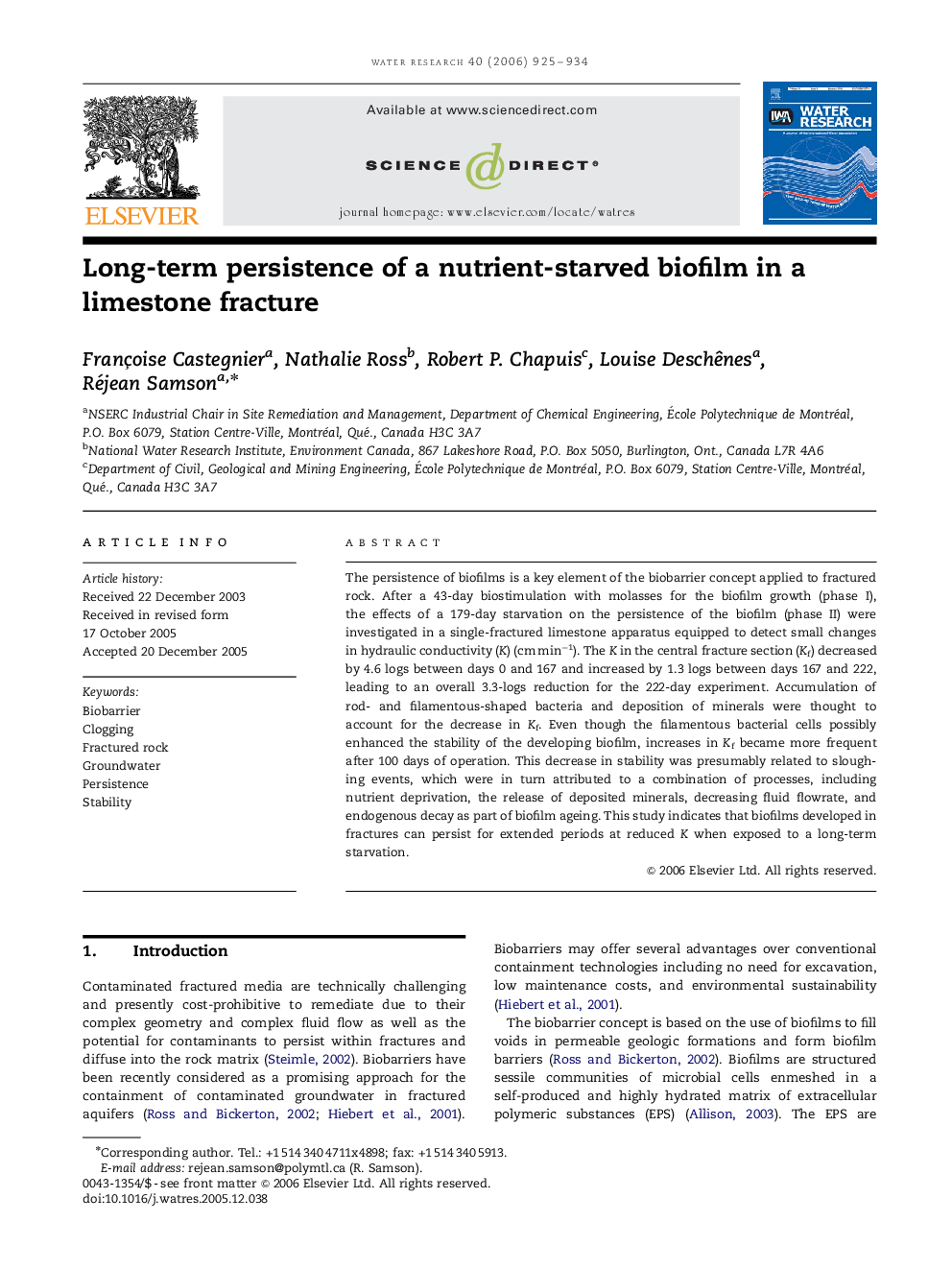| Article ID | Journal | Published Year | Pages | File Type |
|---|---|---|---|---|
| 4486649 | Water Research | 2006 | 10 Pages |
The persistence of biofilms is a key element of the biobarrier concept applied to fractured rock. After a 43-day biostimulation with molasses for the biofilm growth (phase I), the effects of a 179-day starvation on the persistence of the biofilm (phase II) were investigated in a single-fractured limestone apparatus equipped to detect small changes in hydraulic conductivity (K) (cm min−1). The K in the central fracture section (Kf) decreased by 4.6 logs between days 0 and 167 and increased by 1.3 logs between days 167 and 222, leading to an overall 3.3-logs reduction for the 222-day experiment. Accumulation of rod- and filamentous-shaped bacteria and deposition of minerals were thought to account for the decrease in Kf. Even though the filamentous bacterial cells possibly enhanced the stability of the developing biofilm, increases in Kf became more frequent after 100 days of operation. This decrease in stability was presumably related to sloughing events, which were in turn attributed to a combination of processes, including nutrient deprivation, the release of deposited minerals, decreasing fluid flowrate, and endogenous decay as part of biofilm ageing. This study indicates that biofilms developed in fractures can persist for extended periods at reduced K when exposed to a long-term starvation.
